I was diagnosed with advanced prostate cancer nine years ago, at age 52. I have had my prostate removed, two rounds of radiation, two rounds of hormone treatment, and here I am nine years later, feeling great considering I am still in the battle. I have had to make major life shifts for the sake of my health outcome and to boost my odds. I believe I am thriving in large part, even with cancer, because of the changes I have made. In this article, I’ll share those changes, how I implemented, sustained, and grew them, as well as other strategies I used in dealing with prostate cancer.
A Little About Prostate Cancer

Prostate cancer develops in the prostate, a male sexual gland. And like all cancers, it can be aggressive and spread (metastasize) to other areas of the body where it can become life-threatening. According to the World Journal of Oncology, prostate cancer is the second most frequently diagnosed cancer in men and the fifth leading cause of death worldwide. If you are a man in the US, you have a 1 in 9 chance of being diagnosed with prostate cancer in your lifetime. In 2018, there were approximately 1.3 million new cases globally, with over 164,000 of those in the US.
The American Cancer Society identifies age as the number one risk factor for prostate cancer. That is, the older you are, the more likely you are to have prostate cancer. African American men are also at higher risk of being diagnosed and are more likely to have high-grade, aggressive cancer. But when we take a step back, it becomes clear that prostate cancer rates are much higher in the western world, where diets high in animal products and processed foods are now the norm.
Additionally, population migration studies demonstrate that when men move from an area of the world with comparatively low levels of prostate cancer to an area with higher rates, their risk of prostate cancer also increases. This diet and lifestyle connection demonstrates that there is more at play than just genetics — or how many trips a man has made around the sun.
Diet Matters for Risk and Recurrence
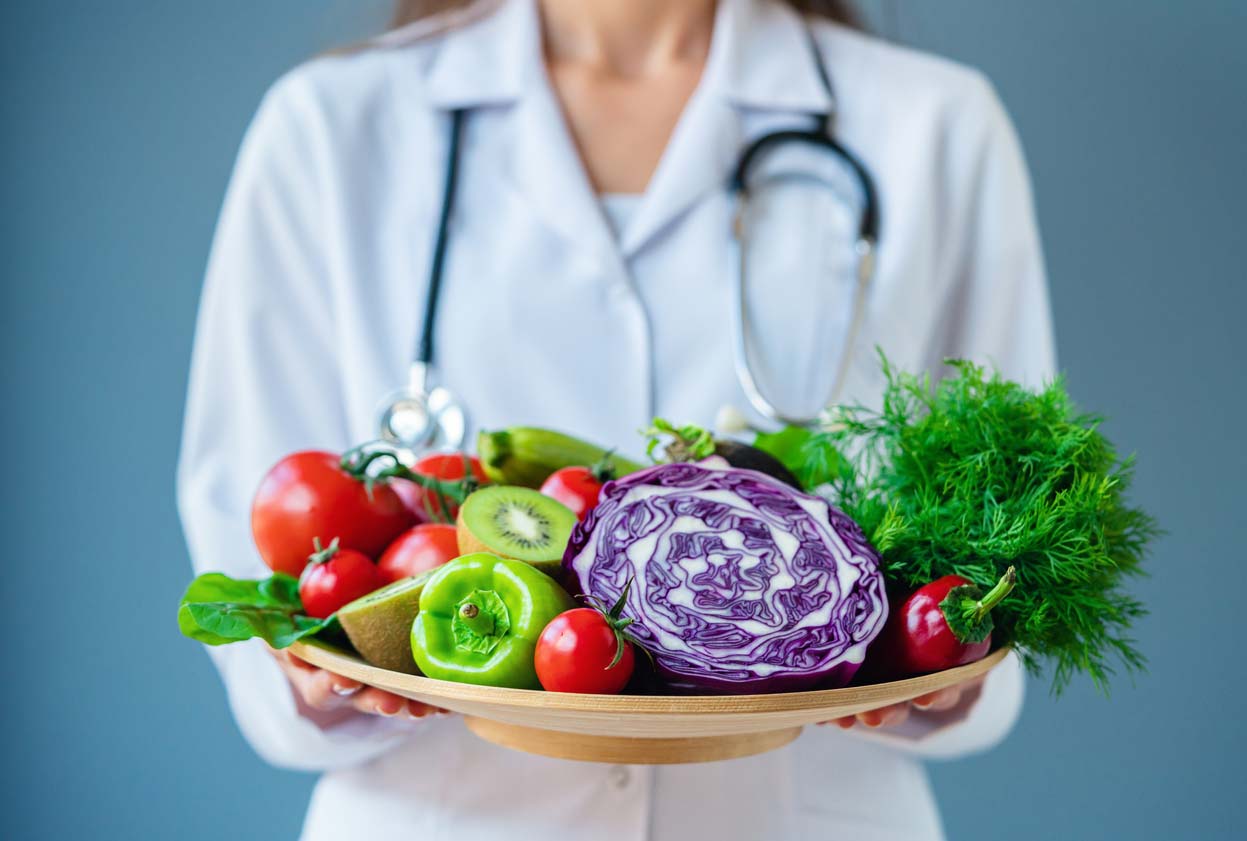
Overall, the cancer community is in agreement that the best treatment for prostate cancer, like most cancers, is prevention. Although there are scores of new medical treatments developed every year, a healthy plant-based diet is still the gold standard when it comes to dealing with prostate cancer.
Studies have revealed that dairy, egg, and chicken consumption is correlated with an increased risk of prostate cancer, as well as greater odds of recurrence after diagnosis. The reasons are not totally clear, but many nutritional researchers attribute the higher risk at least partially to increased levels of circulating insulin-like growth factor-1 (IGF-1) in the blood. Studies suggest that vegans have lower IGF-1 levels than meat-eaters or lacto-ovo vegetarians, potentially putting them at a lower risk for cancers like prostate cancer. IGF-1 is very important for growth and sexual development in children and adolescents, but should naturally decrease with age.
Obesity also increases the risk of prostate cancer as well as the risk of recurrence and aggressiveness after treatment. And what’s one of the healthiest ways to avoid or reverse obesity? A growing body of research indicates that a whole foods, plant-based diet demonstrates the ability to improve body weight, fat mass, and insulin resistance markers.
A Plant-Based Diet for Dealing with Prostate Cancer
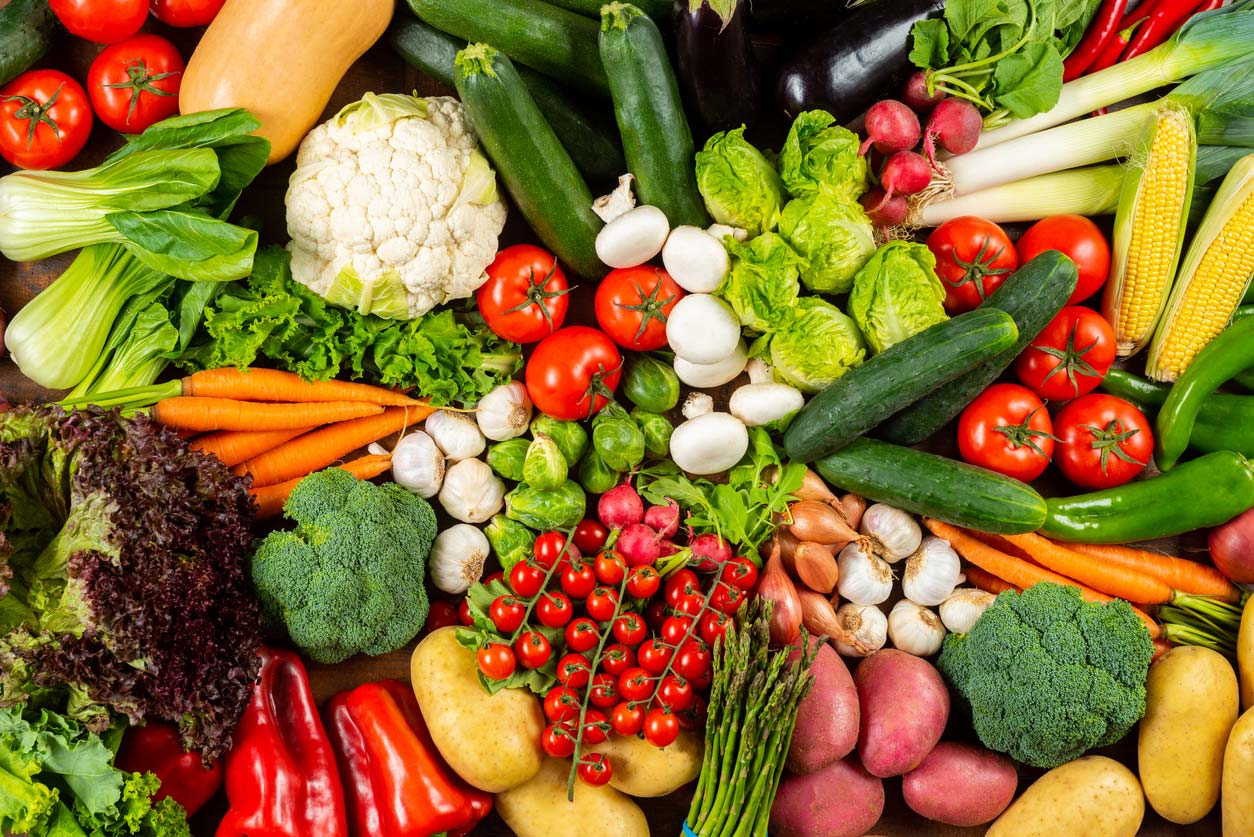
In 2005, Dr. Dean Ornish was the first researcher to complete a randomized, controlled trial demonstrating that PSA, the primary blood marker for prostate cancer, could be reduced with a vegan diet in men with early-stage prostate cancer. Dr. Ornish published another pilot study in 2008, showing that diet strongly impacts the way our genes operate. This trial showed that a diet of whole, plant-based foods can slow the progress of cancer by activating tumor-suppression, killing genes, and turning down tumor promotion pathways.
There has been a lot of media attention on cooked tomatoes and lycopene for prostate cancer, but don’t let that obscure the bigger picture. “Leaning-to-the-green” (that is, just eating more whole plant foods) is a simple and essential tool in both prevention and treatment of the disease. In my opinion, the entourage effect of antioxidants, fiber, vitamins, and minerals that comes with eating a diverse plant-based diet sits at the top of reasons why moving in this direction is the best nutritional investment for health.
Adjusting Eating Patterns

My prostate cancer diagnosis at an early age (52) forced me to confront my lifelong dietary habits. For half a century, and completely unaware that I was doing so, I ate what we now know is a cancer-promoting diet. Growing up in Atlanta, Georgia, fried chicken and Coca-Cola were the primary food groups to choose from.
When my cancer diagnosis arrived, I was deeply entrenched in the standard American diet — and was 40 pounds heavier than I am now. My doctor was about to put me on cholesterol and blood pressure meds. He never mentioned diet as a potential avenue to lower my blood pressure or my cholesterol.
That same year I read The China Study by Dr. T. Colin Campbell. Each page stunned me. After finishing it, I was angry because, for all these years, I had had no idea about the research on diet and cancer as outlined in the book, nor how my eating habits were resulting in (or contributing to) me developing cancer. Reading that book was the beginning of turning my health (and life) around. The cancer diagnosis, coupled with my new-found nutritional knowledge, forced me — compelled me — to make BIG changes in my diet. The diagnosis was gut-wrenching, but knowing that I had the power through diet and lifestyle changes, to perhaps alter the outcome, gave me hope.
And, although I was determined and dove into a plant-based lifestyle, it took me years of trial and error to fully implement how I eat today. Everyone is different, but I hope that sharing my transition story may help others avoid or deal with the obstacles that are bound to arise.
My Transition Roadmap
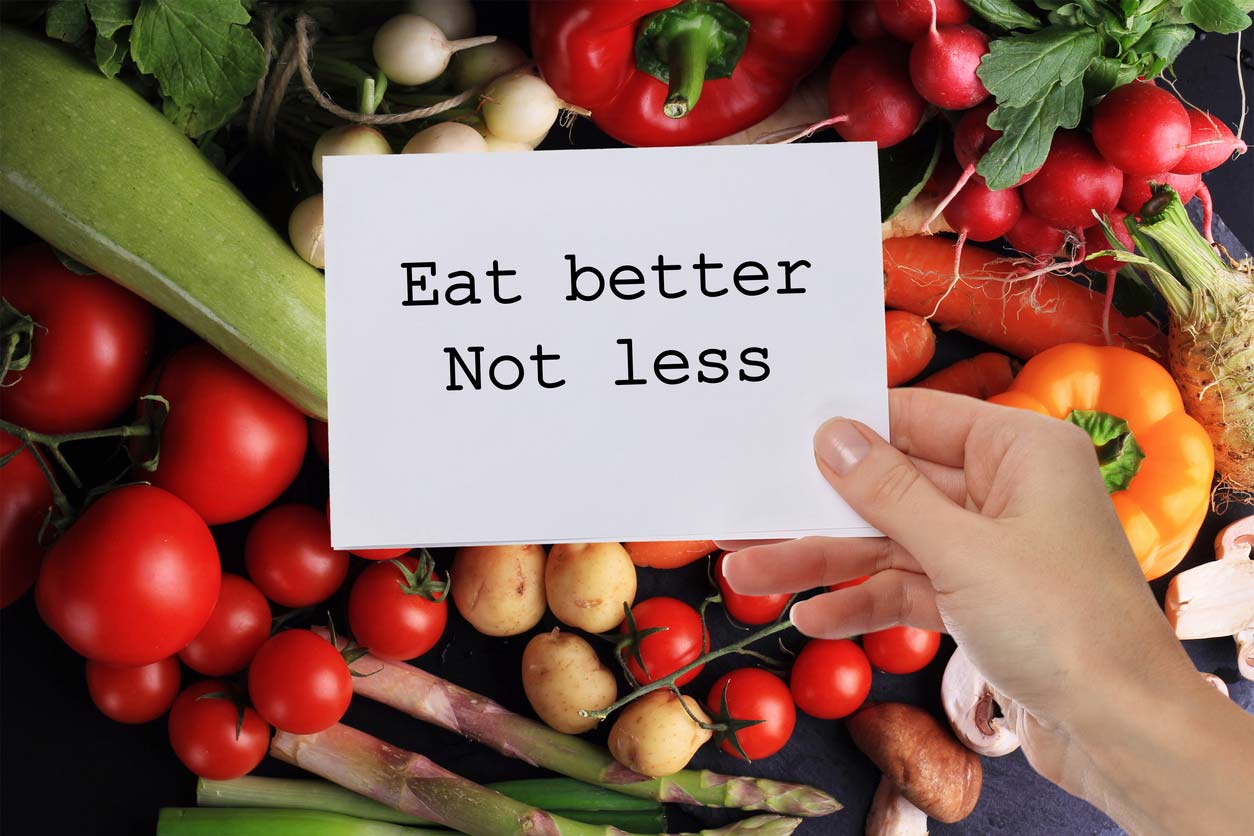
There are behavioral models that outline the best ways to change behavior based on personality. Two very different but valid approaches are Dipping (making small changes over time) and Diving (making the big change all at once). There are pluses and minuses to both. But for me, my cancer was a clear and loud signal that I was on fire, and I needed to make dramatic changes to put out the flames. So I dove in. I learned a lot along the way that I hope will help you no matter where you may be on that Dipper or Diver continuum.
The one tool I used for ALL meals when I decided to go completely plant-based was to NEVER deprive myself and to always feel satiated. Initially, eating out or at home, I consciously filled my plate mostly with veggies and fruit and ate them first. Grains, beans, and potatoes were next or combined with my veggies. I learned right away that I needed to have substitutes for “my guilty pleasures” to make the transition easier. I replaced the foods I was trying to remove from my diet with healthier alternatives, and then actually eliminated many of the alternatives altogether as my taste buds shifted to craving the healthy stuff.
Typical Meals Before, During, and After My Transition
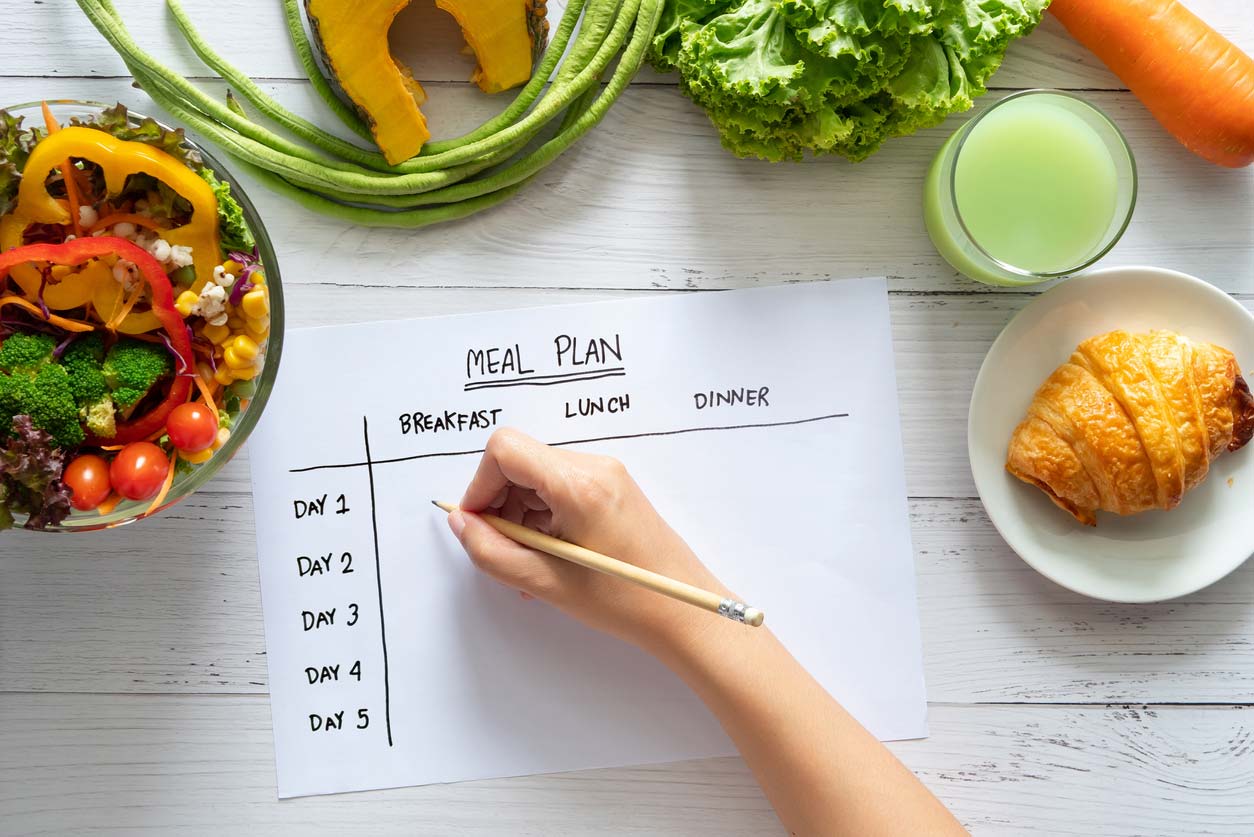
Breakfast
My Breakfast Before:
White bagel w/ cream cheese
Scrambled eggs with hash browns
Strong coffee with half and half creamer
Transition Breakfast:
Steel-cut oatmeal with berries.
No egg omelet — sans the egg but with the oil (easy to make and delicious)
Coffee or green tea with soy milk
Breakfast Now:
Kamut groats with a little soy milk and a little maple syrup
Topped with fresh (or frozen, which is also great) raspberries, blueberries, and two tablespoons of freshly ground flax seeds, which adds both flavor and essential fatty acids
Just this year, my wife, Mindy, and I made a huge change to breakfast. Instead of oatmeal, we now eat whole Kamut groats. Groats are simply the hulled (outer husk removed) seed of any type of grain (including oat, wheat, rye, barley, buckwheat, and Kamut). Steel-cut oatmeal is oat groats that have been coarsely cut. Even this minimal amount of additional processing allows our digestive enzymes to break down the food quicker, promoting a faster post-meal rise of blood sugar.
Groats, on the other hand, are intact and compact grains resulting in a slower digestive process with less sugar released. The big advantage to groats over oatmeal for me is longer satiation throughout the day. We buy whole organic groats, which we rinse and soak overnight. Then we boil the groats in water for about 20 minutes and serve just like you serve oatmeal. Kamut groats, in particular, have a crunchy outer coating with a nutty, soft fleshy center. All groats are packed with fiber, protein, and antioxidants. Additionally, many groats are also gluten-free — including buckwheat, oat, and teff.
Lunch
My Lunch Before:
Smoked turkey sandwich on processed bread w/cheddar cheese and mayo
Bag of potato chips
Soda
Transition Lunch:
Salad Bar with commercial full-fat dressing
A bag of potato chips (Always)
What I was still eating, in ignorant bliss, was a lot of processed, added fat in the form of oil. Three years into my whole food, plant-based journey, I began to read about the potential negative health implications of consuming processed oil. As an experiment, we went out of our way to not consume any of these “free fats.” And the results were stunning: Three days in, and I tried a taste of stir-fry cooked with oil, and I simply could not eat it. It tasted horrible! I wanted my food oil-free after just three days of giving it up!
Lunch Now:
Salad bar with lemon juice and balsamic or apple cider vinegar as the dressing (Since COVID-19, we are making our own salad bar at home.)
A side of black beans or lentils with brown rice or groats.
And to take the place of the crunch of the potato chips that I love, I toast organic stone-ground corn tortillas in the toaster. This takes care of the crunch factor, and they taste amazing.
Dinner
My Dinner Before:
Meat of some sort which was at least half of the plate (steak, chicken, fish)
Baked potato or white rice with all the fixings (olive oil or butter)
A piece of broccoli
Two martinis and a glass of wine
Transition Dinner:
Tempeh or tofu stir-fry to replace the meat
Baked potato with nutritional yeast (for the cheesy flavor)
Lots of steamed broccoli
One martini and a glass of wine
Dinner Now:
Rice (or groats) w/ beans or lentils
Japanese sweet potato
Veggies of all types usually steamed but occasionally raw or in an oil-free stir-fry
Maybe one glass of wine on the weekend
Over the years, my taste buds have shifted to craving more health-promoting foods in their natural form. And my desire to revert back to eating what I ate the first 52 years of my life is gone. I think if everyone knew this would happen to them, many more people would make an effort to improve their diet.
Because I love a good challenge, and I love to cook, making dinner became more experimental, fun, and flavorful! I dove into Italian, Asian stir-fries, Japanese udon soup, and Mexican tacos and burritos. Learning to cook without oil was a challenge and still can be with certain dishes. But for the most part, we have it wired without the additional fat.
Adding Healthy Flavor to Food
Try experimenting with these for oil-free cooking:
Water
Veggie broth
Mustard
Vinegar (any kind)
Fresh squeezed orange juice — a favorite of mine for stir-frying
Spices and condiments:
One of my biggest fears during my diet transformation was that the food would be bland — I wanted a punch in my flavors! Food Revolution Network came to my rescue with excellent spice and condiment recommendations that taught me how to pair flavors with the foods being prepared.
Some of my favorite spices for just about everything:
Smoked paprika
Dry or fresh dill
Chili pepper
Garlic powder (no salt)
Onion powder (no salt)
Epazote — an amazing herb from south of the border for cooking beans and mushrooms. This spice tastes amazing and helps to eliminate the potential gas issues that sometimes accompany cooked beans.
Some of my favorite condiments for just about everything:
Mustard
Fermented black bean sauce
Salsa
Hot Sauce
Tahini
At the end of the day (pun intended), we have settled into a routine of rotating meals that we cook at home, which are simple, very healthy, filling, and, most importantly, delicious. Our go-to’s for dinner at least four nights a week are rice and bean tacos, sweet potatoes, and steamed veggies with balsamic vinegar and a little fresh lemon.
The Challenges Along the Way
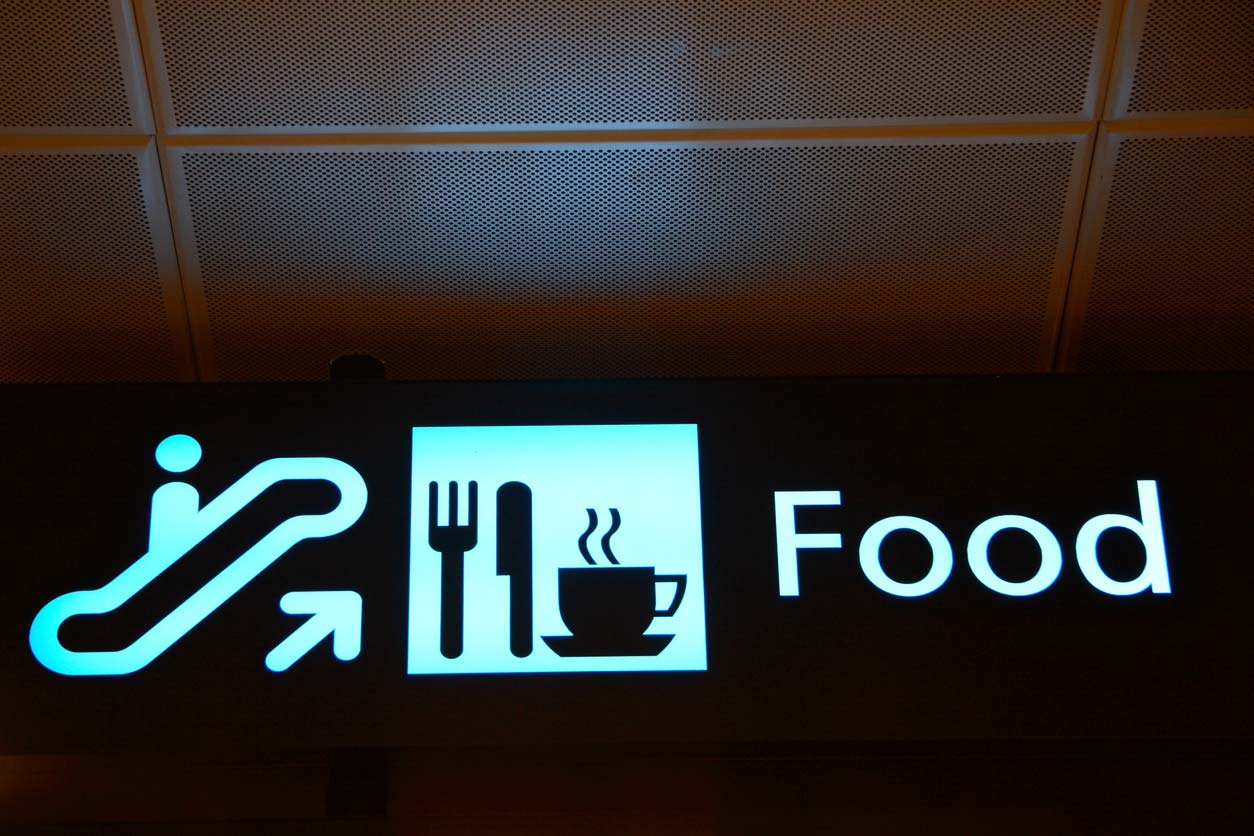
Of course, with every major life change, there are undoubtedly ups and downs to face. These are some of the challenges I struggled with initially, but eventually overcame.
Staying Satiated Throughout the Day
This was an issue for me up until my “great groat” discovery for breakfast. Just recently, I started adding about a quarter of a cooked sweet potato right into my morning groats and berries. It’s the only thing I want for breakfast now, and it keeps me going well into the afternoon if needed. Although I still eat whole grain bread and love it, I try to steer more toward the intact grains themselves.
Eating Out
We live and work on the road and have to eat out quite often. We avoid it as much as we can because we like the food we make so much better, but eating out is doable and can be quite healthy with a little planning and patience.
Curious where our go-to place for a travel dinner is? Ready for it? A quality steak restaurant. Here we can always order a salad with balsamic and lemon, a baked potato with fresh steamed veggies and salsa, and fresh berries or fruit for dessert. We bring our own nutritional yeast for that cheesy flavor. Crazy but true.
Fat
I love avocados (it’s required if you live in California). I love nuts. And I love coconut. Having said that, I have made a consistent effort to limit them because I tended to overeat these healthy but higher-fat foods. I no longer snack on nuts throughout the day, but I do eat a few walnuts and pistachios a few times a week in addition to the ground flax or chia seeds on my groats in the morning.
Minimizing nuts, seeds, and avocado, and at the same time, ramping up my daily consumption of beans, lentils, and groats came with additional healthy weight loss coupled with all-day satiation. This change was huge for me in my nutritional journey!
Air Travel
The night before a flight, I make a double dinner. Batch cooking is going to be your best friend for travel and transitioning to a healthier diet. When we batch cook, we have leftovers to take on the plane. And this extra step saves our health and our wallet in addition to making some flight attendants and passengers very envious.
Our emergency airport go-to’s:
Packaged salads — but I don’t use the salad dressing that’s included in the package. I now travel with my own oil-free dressing. Airport coffee shop oatmeal can also be decent and a good choice if nothing else is available. I always bring a small box of raspberries or blueberries with me and drop them on the oatmeal prior to eating.
Food Can Be a Powerful Tool for Fighting Cancer
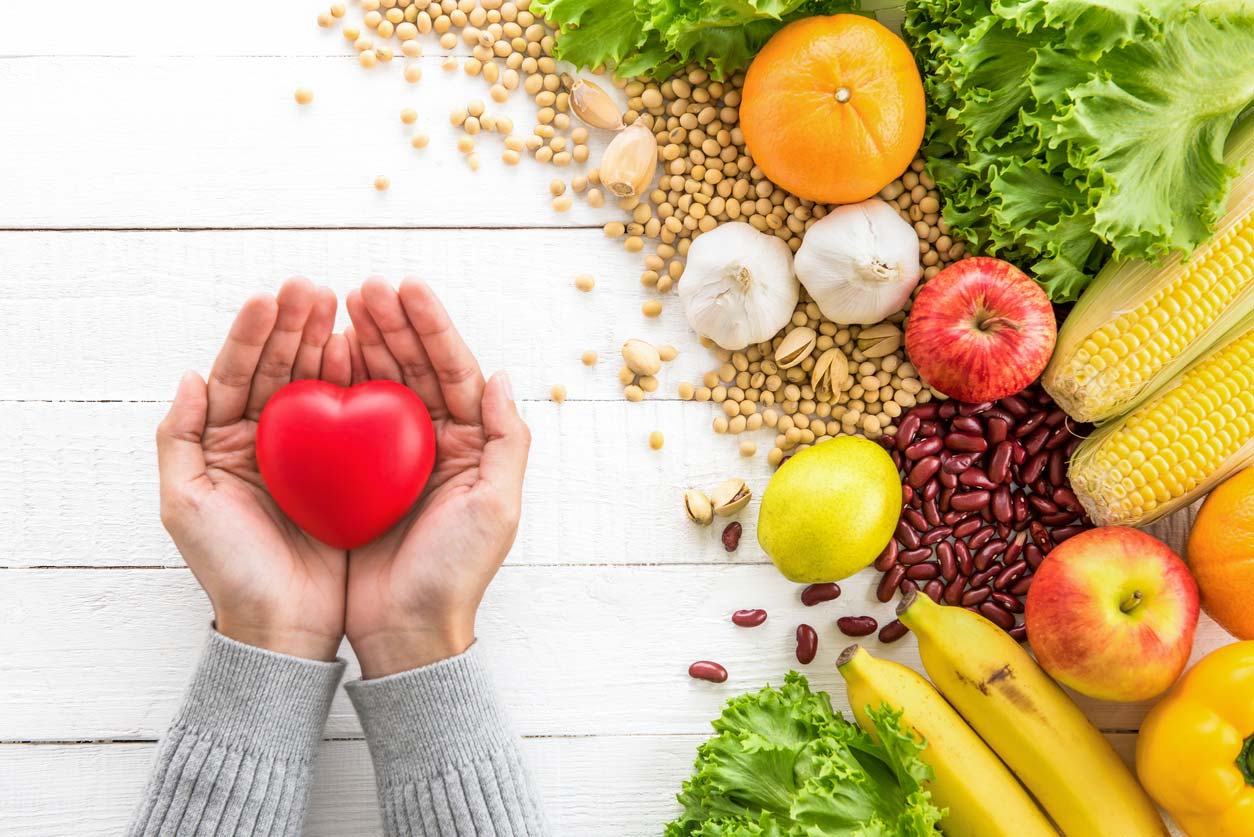
After nine years of focused effort and trial and error, I have successfully moved from a disease-promoting diet to a health-promoting one. I love the food I eat now. I love the way I feel eating this way, and I KNOW it’s a powerful tool in my cancer battle. My weight, blood pressure, and cholesterol are excellent. And I am in better physical condition at 62 than I was at 32!
Hopefully, sharing my story helps a few folks trying to change their eating habits. If you would like to learn more about my cancer journey, along with thought-provoking interviews with some of the greatest minds in nutrition and cancer, you can find both in my book: A Plant Powered Approach to Prostate Cancer.
Tell us in the comments:
- Do you know anyone who has changed their diet after receiving a cancer diagnosis?
- What lifestyle changes have you made to help prevent or reverse cancer?
Feature image: iStock.com/wildpixel

